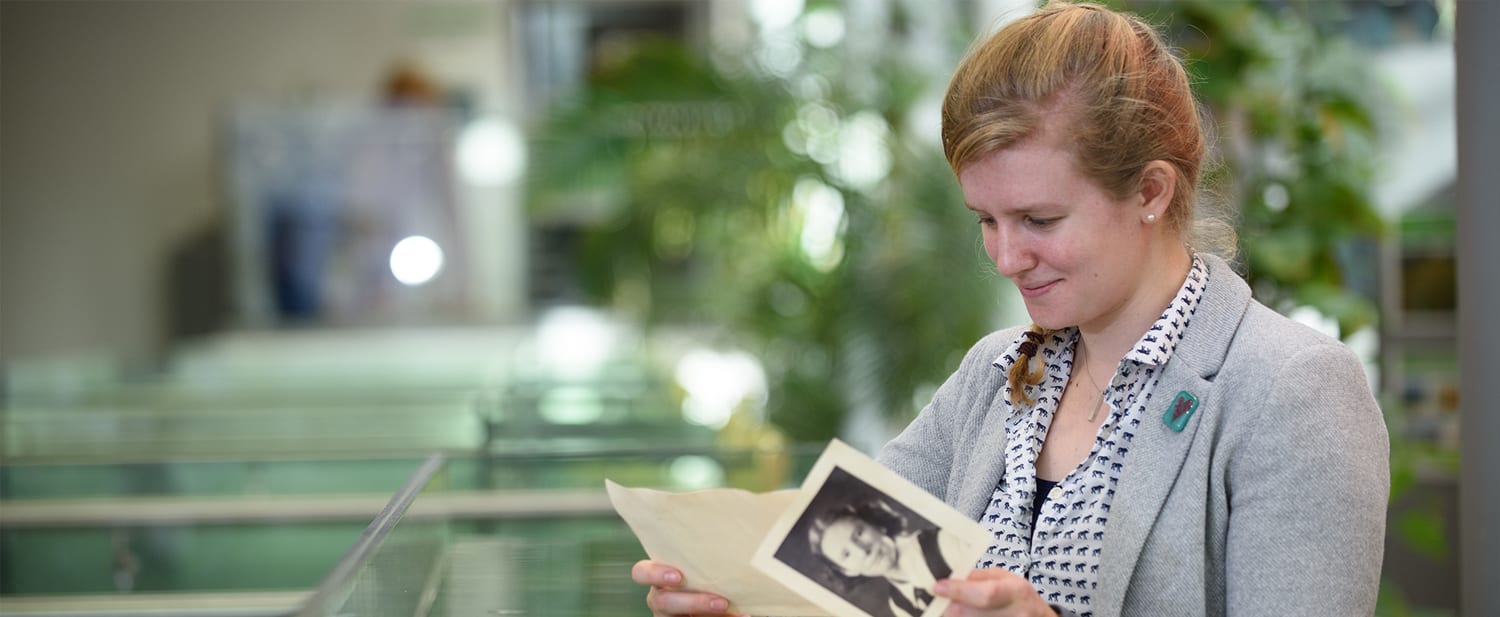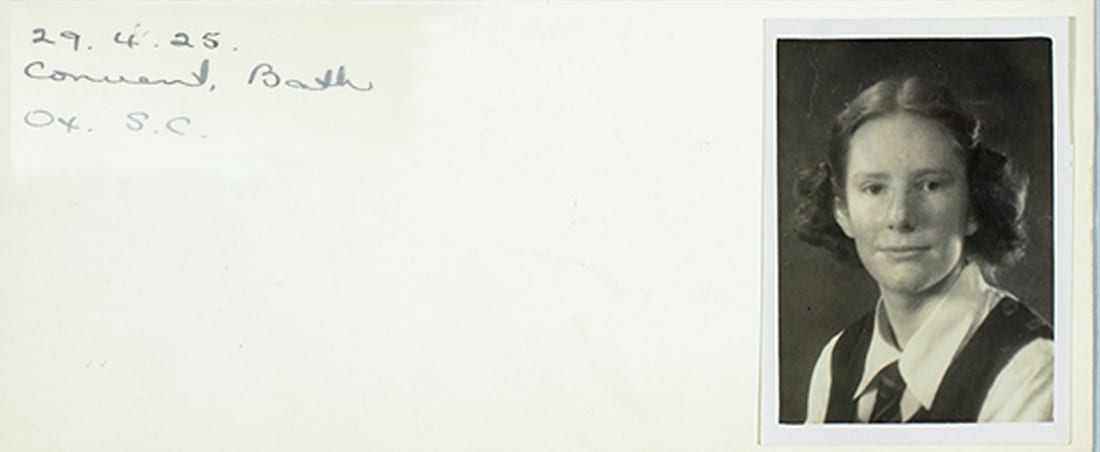 In a year when we’re celebrating 100 years of some women getting the vote in the UK, Nonesuch takes a look at pioneering women in the School of Physics.
In a year when we’re celebrating 100 years of some women getting the vote in the UK, Nonesuch takes a look at pioneering women in the School of Physics.
When Veronica Macmillan started life as a Physics student at Bristol during World War II, little did she know that over 70 years later she would be helping new generations of physicists with their groundbreaking work by leaving a legacy to the School. Taking advantage of the University of Bristol’s longstanding openness to diversity, Veronica started studying for her BSc in 1942 as one of only a handful of female students of the 100 or so in her year. Her father had died when she was just ten years old, but she did not allow the tragedy experienced as a young girl to derail her ambitions for a higher education. Today we’re well aware of the importance of bursaries and scholarships for amazing students who might not otherwise get the chance to study, and in the 1940s the need for this assistance was also recognised. Veronica was awarded an Education Board Grant for her time at Bristol and travelled to study every day by bus from Bath.
Veronica fondly remembered Professor Arthur M Tyndall, known as the ‘Father of the School of Physics’. Of other lecturers she recalled that their handwriting could be difficult to read – one in particular making little distinction between his Us and Vs, thus making his formulae very difficult to understand!
As well as attending to her studies, Veronica played her part in the war effort, together with several of her fellow students who worked at the nearby Badminton Estate in South Gloucestershire. She recalled seeing Queen Mary who was sequestered there at the time. And while Veronica was working at Badminton, staff in the School were also doing their part, looking at the use of radar in the war.
 While Veronica’s time at Bristol might have been overshadowed by the planes of war, 22-year-old Astrid’s research is looking at how to make civil aviation safer, as well as better for the environment. The Rugby native’s fully funded PhD work looks at ‘Non-destructive detection of corrosion on in-service gas turbine components.’
While Veronica’s time at Bristol might have been overshadowed by the planes of war, 22-year-old Astrid’s research is looking at how to make civil aviation safer, as well as better for the environment. The Rugby native’s fully funded PhD work looks at ‘Non-destructive detection of corrosion on in-service gas turbine components.’
Although she loved her time at the School of Physics, Veronica did feel that she missed out on the social aspect of being a student, as she could not afford to stay in Bristol and went to and from her home in Bath. She did however manage to join her classmates at the refectory, and later in life could still recall the novelty of eating pink semolina pudding!
Upon graduating with her BSc in Physics, Veronica completed her teacher training – also at Bristol – and spent her life working at the convent school in Bath which she herself had attended as a child. Not only did she give back to young children as an educator, on her death last year she bequeathed a large legacy to the School of Physics, so that other bright young minds could carry on the work that she herself had so enjoyed.
One of those bright minds is Astrid Blee (MSci 2017), currently studying for her PhD in Physics, in an environment very different from that of Veronica’s. Despite seeing Bristol at its windy, rainy wildest on a post-offer day at the University, Astrid was still struck by how beautiful and inspiring the campus and city was.
While Veronica’s time at Bristol might have been overshadowed by the planes of war, 22-year-old Astrid’s research is looking at how to make civil aviation safer, as well as better for the environment. The Rugby native’s fully funded PhD work looks at ‘Non-destructive detection of corrosion on in-service gas turbine components.’ In a nutshell, she’s looking at ways to accurately detect ahead of time when an aircraft’s turbine blades are about to crack. Currently there is no accurate way of measuring this, so blades are ‘retired’ long before their life span has ended in order to meet stringent safety regulations. However, this does mean that it’s not great news for the environment to keep replacing the blades unnecessarily.
‘As soon as I came to Bristol I thought it was a place where I could live and thrive. What I really love about my area of physics is applied problem solving. I like taking a real-life problem and looking for a way to solve it.’
PhD student, Astrid Blee (MSci 2017)
So, what is it that attracted Astrid to physics? ‘What I really love about my area of physics is applied problem solving. I like taking a real-life problem and looking for a way to solve it.’ Unlike Veronica, Astrid has lived in Bristol since starting her undergraduate degree here and has been able to take advantage of the social life as well as academia. Her problem-solving mind extends from physics to one of her favourite hobbies – rock climbing. ‘I find it very mindful. You start at the bottom of the wall and your only goal is to get to the top. Working out how to get to the top, particularly when it gets more difficult – you can’t just use brute strength. You have to think about the problem and how you can solve it. And if that doesn’t work, try again.’
 And what is it that makes the University of Bristol’s School of Physics so great? According to Astrid it’s the grand long-term vision that what seems elusive and theoretical now will go on to make enormous contributions to society: ‘Researchers who are working on new theoretical physics are laying the foundations now for what’s to come in the future. This maths can and will be applied to real world problems. You need a long-reaching view, which Bristol has, to be confident that it will be of great importance in the future. Take quantum physics. Laying the groundwork for that was started 100 years ago, and now we’re moving towards quantum computing and quantum optics and things that will start to have real world applications. Bristol is nurturing what may seem to some like a lot of theory, but we have the vision that it will be used in the future.’
And what is it that makes the University of Bristol’s School of Physics so great? According to Astrid it’s the grand long-term vision that what seems elusive and theoretical now will go on to make enormous contributions to society: ‘Researchers who are working on new theoretical physics are laying the foundations now for what’s to come in the future. This maths can and will be applied to real world problems. You need a long-reaching view, which Bristol has, to be confident that it will be of great importance in the future. Take quantum physics. Laying the groundwork for that was started 100 years ago, and now we’re moving towards quantum computing and quantum optics and things that will start to have real world applications. Bristol is nurturing what may seem to some like a lot of theory, but we have the vision that it will be used in the future.’
Bristol’s School of Physics has been making its mark on science for over a hundred years, including turning out several Nobel laureates. It is recognised worldwide for its pioneering research in a wide range of areas, including: quantum mechanics, nanoscience, quantum information science, semiconductors, condensed matter and metal physics, cosmic ray and astrophysics, glaciology, X-ray interferometry and topological optics. Veronica’s legacy will ensure that future students of this esteemed School continue to push the boundaries of science ever further forward. Astrid is just one of many at Bristol taking on the challenges of the world we live in today.
We are holding an event this summer about leaving Legacy gifts to support Physics at Bristol. If you would like to know more about the event then please contact Jenny McGee on +44 (0)117 394 1045.
You can listen and download the audio version here (mp3).

What is Astrid’s research focused on? Greeting : IT Telkom